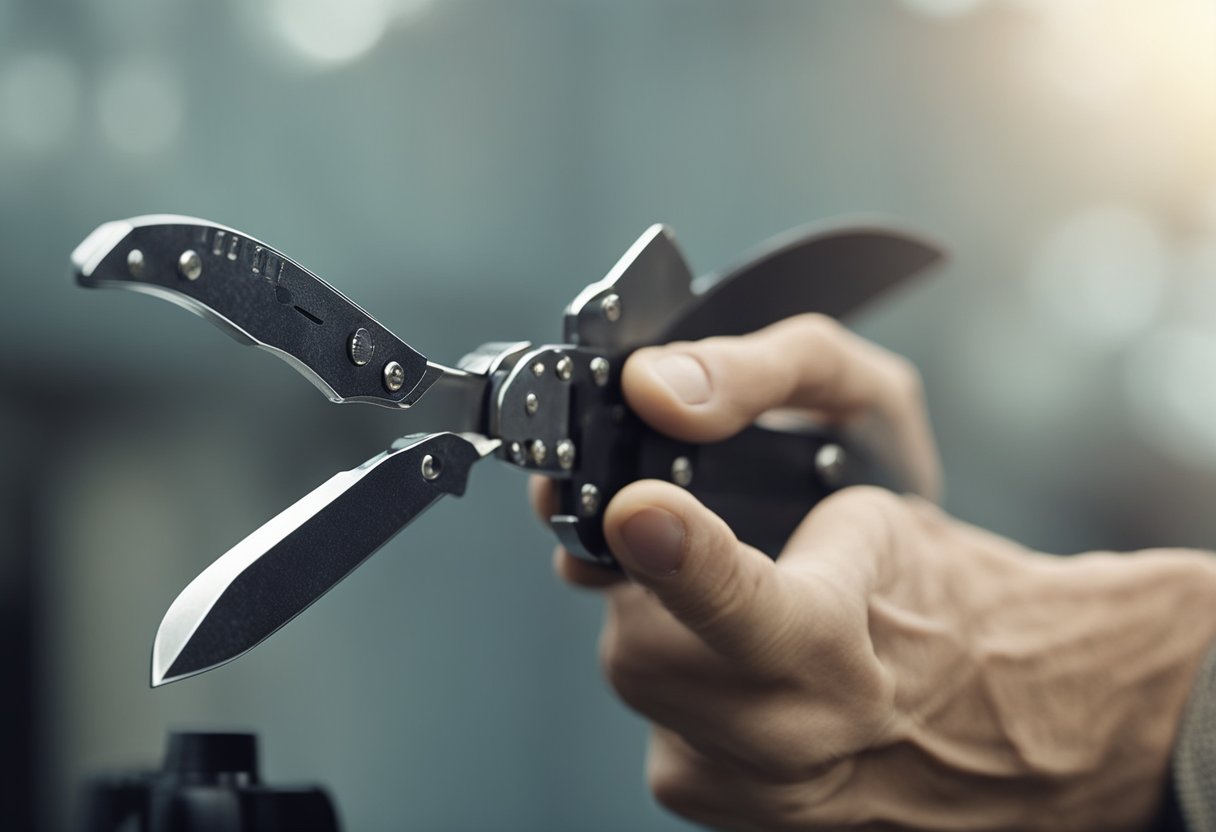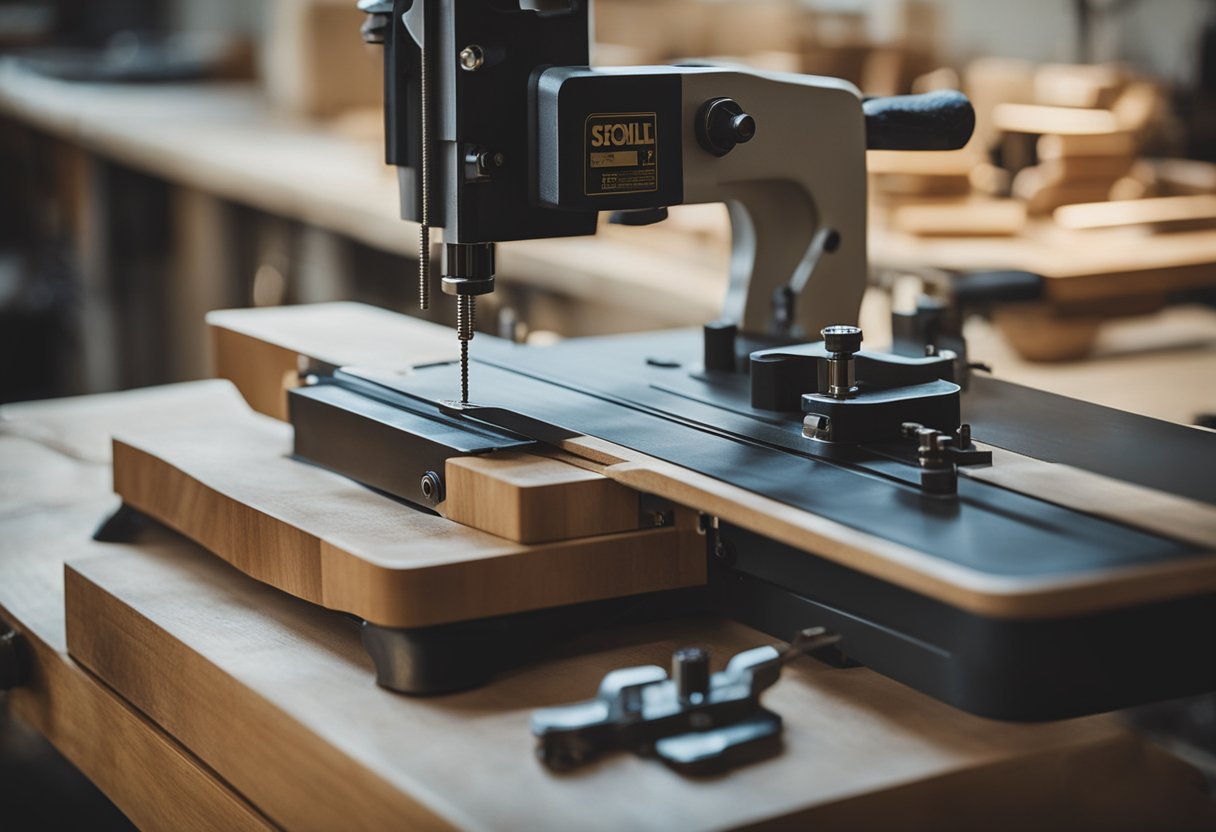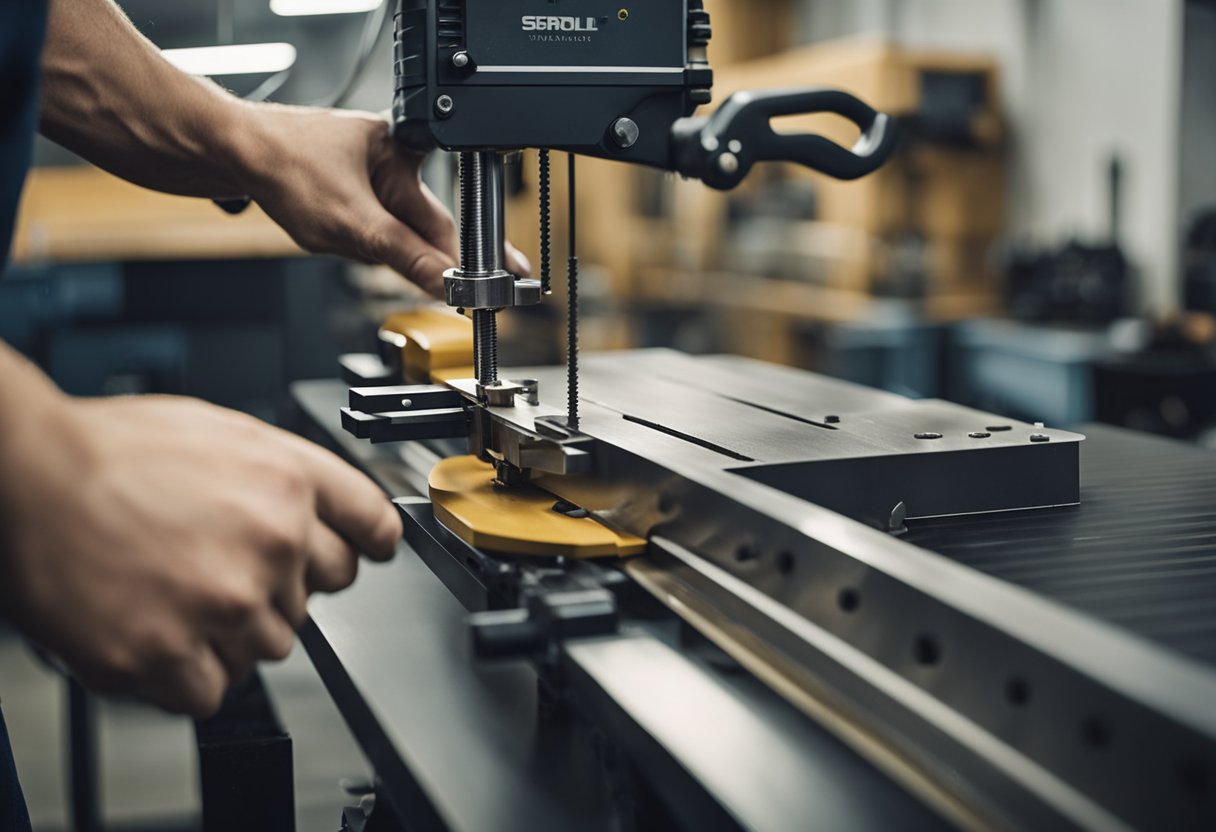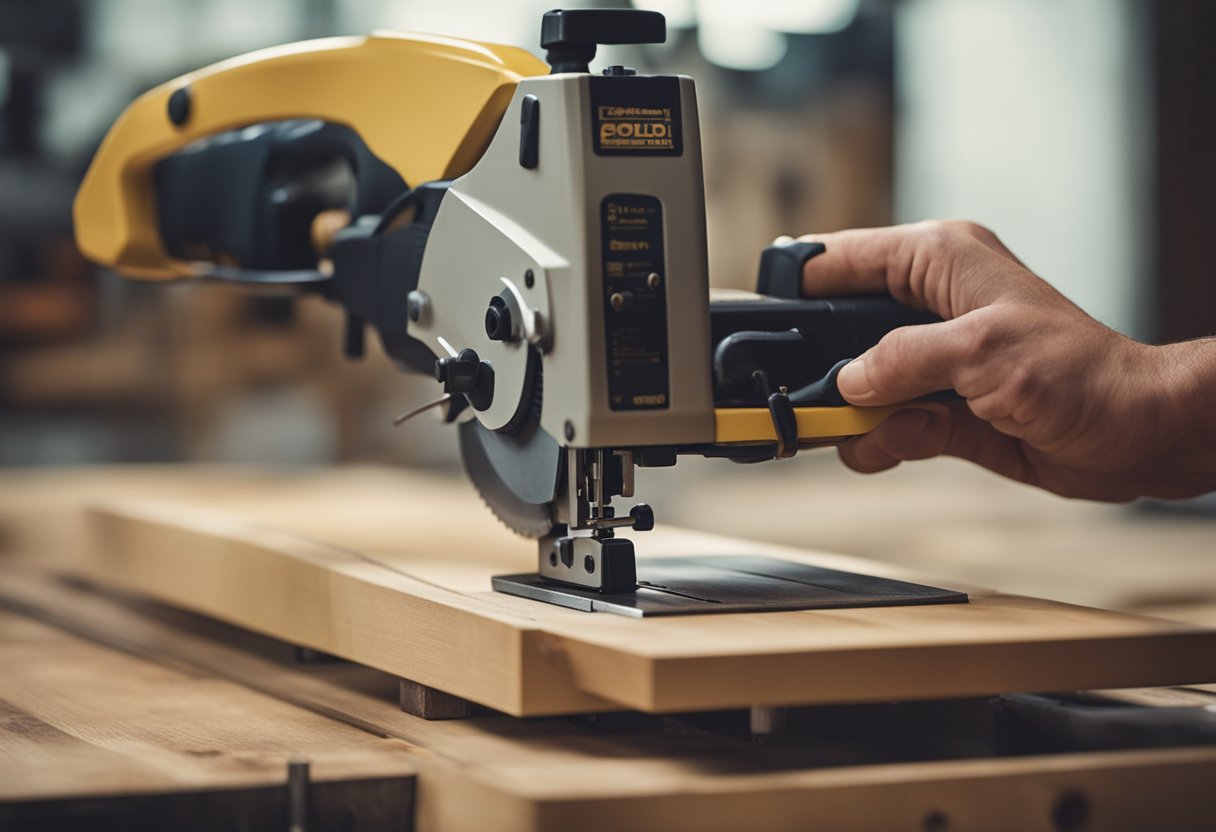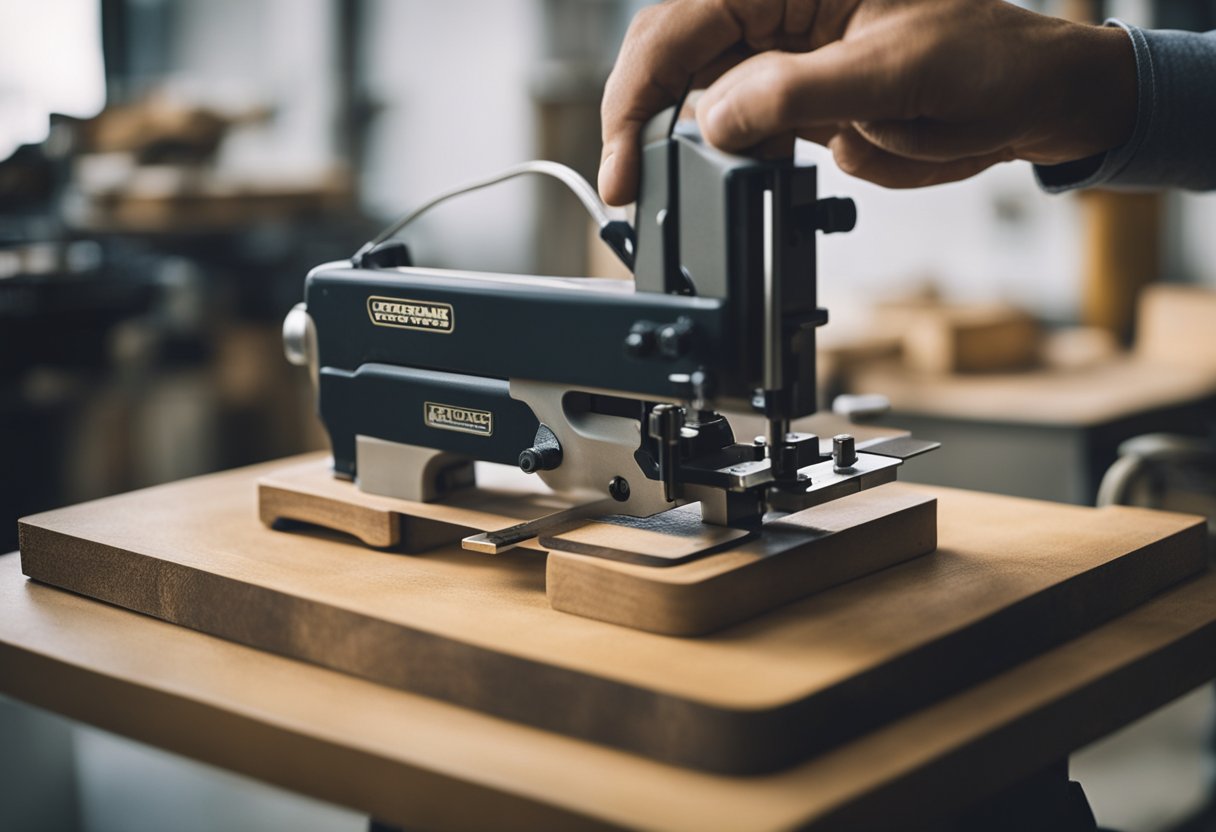Changing a scroll saw blade is a necessary skill for any woodworker. It may seem daunting at first, but with a little practice, it becomes second nature. In this article, I will guide you through the process of changing a scroll saw blade step-by-step. By the end of this article, you will have the confidence and knowledge to change your scroll saw blade with ease.
Before we dive into the process of changing a scroll saw blade, it is important to understand the basics of a scroll saw. A scroll saw is a type of saw that is used to make intricate cuts in wood, metal, or other materials. It is a versatile tool that can be used for a variety of projects, from woodworking to metalworking. Understanding the basics of a scroll saw will help you to better understand the process of changing the blade.
Now that we have a basic understanding of what a scroll saw is, let’s move on to the process of changing the blade. There are several steps involved in changing a scroll saw blade, including preparing the saw, removing the old blade, installing the new blade, and adjusting the blade tension. Each step is important and must be done correctly to ensure a safe and successful blade change.
Understanding Scroll Saw Basics
https://www.youtube.com/watch?v=DmtkafjkHuw&embed=true
As a woodworker or artist, it is essential to have a good understanding of the basic components of your scroll saw. A scroll saw is a power tool used to make intricate cuts in wood, metal, or other materials. It consists of a table, a lamp, a foot, a power switch, a speed control, a throat plate, a motor, an upper arm, and a lower arm.
The table is the flat surface where you place your workpiece. It can be tilted to make angled cuts. The lamp illuminates the work area, making it easier to see your cut lines. The foot is a pedal that controls the blade’s speed by adjusting the motor’s power. The power switch turns the saw on and off.
The speed control allows you to adjust the blade’s speed to match the material you are cutting. A slower speed is better for cutting thick or hard materials, while a faster speed is better for thinner or softer materials.
The throat plate is a removable plate that covers the hole in the table where the blade passes through. It helps to reduce the amount of tear-out and keep the workpiece level. The motor powers the blade, and the upper and lower arms hold the blade in place.
By understanding the basic components of your scroll saw, you will be better equipped to use it effectively and safely. In the next section, I will explain how to change a scroll saw blade step-by-step.
Types of Scroll Saw Blades
https://www.youtube.com/watch?v=n2v9O0-Mz80&embed=true
When it comes to scroll saw blades, there are different types to choose from. Each type has its own unique features, and the choice of blade to use depends on the material you are cutting, as well as the intricacy of your design.
Pinned Blades
Pinned blades are the most common and are used for cutting thicker materials. They have pins on both ends that fit into pre-drilled holes in the saw’s blade holders. The pins prevent the blade from twisting or bending during the cutting process. Pinned blades are not suitable for intricate cuts, as the pins limit the blade’s movement.
Pinless Blades
Pinless blades are used for intricate cuts, as they do not have pins and can be threaded through small holes in the material being cut. These blades are thinner and more delicate than pinned blades, and they are suitable for cutting thinner materials.
Standard Blades
Standard blades are the most versatile type of blade and are suitable for a wide range of materials. They are available in different sizes and tooth configurations, and they can be used for both straight and curved cuts.
Spiral Blades
Spiral blades are designed for cutting in any direction, and they are ideal for making intricate cuts. They have teeth on all sides of the blade, which allows you to cut in any direction without having to turn the material. Spiral blades are available in different sizes and tooth configurations.
Diamond-Tipped Blades
Diamond-tipped blades are used for cutting hard materials such as glass, ceramic, and stone. They have a diamond coating on the blade, which makes them durable and long-lasting. These blades are more expensive than other types of blades, but they are essential when cutting hard materials.
In conclusion, the type of blade you choose depends on the material you are cutting and the intricacy of your design. Pinned blades are suitable for thicker materials, while pinless blades are used for intricate cuts. Standard blades are versatile and can be used for a wide range of materials, while spiral blades are ideal for making intricate cuts. Diamond-tipped blades are essential when cutting hard materials.
Preparation for Blade Change
https://www.youtube.com/watch?v=2tX4QJpncE4&embed=true
Before changing the scroll saw blade, it is essential to prepare the necessary tools and materials. The following items should be gathered:
-
New Blade: Ensure that the new blade is compatible with the saw model. Check the packaging or consult the saw manual for the correct blade size and type.
-
Safety Gear: Wear safety goggles and gloves to protect your eyes and hands from any debris or sharp edges.
-
Allen Key: The Allen key is required to loosen the blade clamp or blade mounts. Check the saw manual for the correct size of the Allen key.
-
Clamps: Clamps are used to secure the saw and keep it stable during the blade change process.
-
Rust Remover: If the blade mounts or screws have rust, it is recommended to use a rust remover to clean them before proceeding with the blade change.
Once you have gathered all the necessary tools and materials, follow these steps to prepare for the blade change:
-
Turn off the saw and unplug it from the power source.
-
If the saw has a blade clamp, use the Allen key to loosen it and remove the old blade. If the saw has blade mounts, use the Allen key to loosen the screws or bolts and remove the old blade.
-
Inspect the blade clamp or blade mounts for any damage or wear. If necessary, replace them before installing the new blade.
-
Clean the blade mounts or screws with a rust remover if there is any rust.
-
Ensure that the new blade is the correct size and type for the saw.
By following these steps and preparing the necessary tools and materials, you can safely and efficiently change the scroll saw blade.
How to Remove the Old Blade
https://www.youtube.com/watch?v=1aGoL-fw8cI&embed=true
Before changing a scroll saw blade, it is important to take proper safety precautions. Ensure the saw is unplugged and the blade is cool to the touch.
To remove the old blade, locate the blade clamp or blade mounts. These are usually screws or bolts that hold the blade in place. Loosen the clamps or bolts using a wrench or pliers.
Once the clamps or bolts are loose, carefully remove the old blade from the saw. Check the blade for any signs of rust or damage. If the blade is rusted or damaged, it is recommended to replace it with a new one.
If the blade is still in good condition, set it aside for later use. Clean the blade mounts or clamps thoroughly to remove any debris or rust. This will ensure a secure fit for the new blade.
In summary, removing the old blade involves loosening the clamps or bolts and carefully removing the blade from the saw. It is important to take safety precautions and check the blade for any damage or rust. Cleaning the blade mounts or clamps will ensure a secure fit for the new blade.
Installing the New Blade
https://www.youtube.com/watch?v=u2HxmyP53Gc&embed=true
Now that I have removed the old blade, it’s time to install the new one. I will need to follow these steps carefully to ensure that the new blade is securely in place and ready to use.
-
First, I will need to make sure that the blade holder is in the correct position. I will do this by adjusting the clamp or clamps that hold the blade in place. I will make sure that the blade is centered in the holder and that it is facing in the right direction.
-
Next, I will insert the new blade into the blade holder. I will make sure that the teeth are facing down and that the blade is properly seated in the holder.
-
Once the blade is in place, I will tighten the screw or bolts that hold the blade clamp in place. I will make sure that the blade is securely held in place and that it will not come loose during use.
-
Finally, I will check the tension of the blade. I will adjust the tension as needed to make sure that the blade is tight enough to cut through the material I will be working with.
Safety is always important when working with power tools. I will make sure to follow all safety guidelines provided by the manufacturer and use caution when handling the blade and blade holder. By following these steps carefully, I can install a new blade on my scroll saw quickly and easily.
Adjusting Blade Tension
When changing a scroll saw blade, it is important to ensure that the blade is properly tensioned to prevent it from breaking or coming loose during use. The blade tension should be adjusted according to the thickness and hardness of the material being cut.
To adjust the blade tension, locate the tensioning knob or screw on your scroll saw. This is usually located at the top or back of the saw near the blade. Loosen the knob or screw to release the tension on the blade.
Next, insert the new blade into the saw and tighten the knob or screw to adjust the tension. You can check the tension of the blade by plucking it like a guitar string. A properly tensioned blade will produce a clear musical note when plucked.
It is important to note that over-tightening the blade can cause it to break, while under-tightening can cause it to wander or come loose during use. Therefore, it is important to find the right balance when adjusting the blade tension.
Always make sure to tighten the screw or knob securely before using the saw. Failure to do so can cause the blade to come loose during use, which can be dangerous.
In summary, adjusting the blade tension is an important step when changing a scroll saw blade. Take your time and find the right balance between over-tightening and under-tightening to ensure the best performance and safety.
Testing and Final Adjustments
Once you have installed the new blade, it’s time to test it out and make any final adjustments to ensure that it’s cutting properly.
First, check the blade tension. A properly tensioned blade will cut straight and smoothly. If the blade is too loose, it will wobble and make curved cuts. If it’s too tight, it will break easily and make rough cuts. Adjust the tension until the blade is tight enough to cut smoothly but not so tight that it’s in danger of breaking.
Next, test the blade by making a few cuts on a scrap piece of wood. Check to make sure that the blade is cutting straight and at the right angle. If it’s not, adjust the angle of the table until the blade is cutting at a right angle to the wood.
If you’re using a thin blade, you may need to adjust the blade guides to keep the blade from bending during the cut. The blade guides should be set just close enough to the blade to keep it from bending, but not so close that they’re rubbing against the blade.
Finally, check the safety features on your scroll saw. Make sure that the blade guard is in place and that your fingers are clear of the blade while it’s running. Always wear eye protection when using a scroll saw.
With these final adjustments, you should be able to make smoother, more precise cuts with your scroll saw.
Maintaining Your Scroll Saw Blades
As a scroll saw user, I understand the importance of maintaining my saw blades. Doing so not only extends the life of the blade but also ensures that it operates safely and effectively.
One of the most common issues with scroll saw blades is rust. Rust can cause the blade to become dull and ineffective, so it’s important to keep the blades dry and clean. After each use, I wipe down the blade with a dry cloth to ensure that it’s free of any moisture.
Another important aspect of maintaining scroll saw blades is ensuring that they’re properly tensioned. A blade that’s too loose can cause the saw to vibrate and make it difficult to make accurate cuts. On the other hand, a blade that’s too tight can cause it to break. I always check the tension of my blades before each use and make any necessary adjustments.
It’s also crucial to keep the blade guard in place and in good condition. The blade guard not only protects the user from injury but also helps to keep the blade in place. If the blade guard is damaged or missing, I replace it immediately.
Lastly, I always make sure to use the appropriate blade for the job. Different scroll saw blades are designed for different materials and thicknesses, so it’s important to choose the right blade for the job. Using the wrong blade can not only damage the blade but also the material being cut.
By following these simple maintenance tips, I can ensure that my scroll saw blades last longer, perform better, and operate safely.
Frequently Asked Questions
What are some tips for changing a scroll saw blade quickly and safely?
Changing a scroll saw blade can be a bit daunting, but with the right tools and techniques, it can be done quickly and safely. One tip is to always make sure that the saw is unplugged before you begin. This will help prevent any accidents from occurring. Additionally, using a blade changing tool can make the process much easier and safer.
How do you know which direction to install a new scroll saw blade?
When installing a new scroll saw blade, it’s important to make sure that it’s facing the right direction. Most blades will have an arrow or other indicator on them to show which way they should be installed. If you’re unsure, consult the manufacturer’s instructions or do a quick search online to find out.
What are some common mistakes to avoid when changing a scroll saw blade?
One common mistake is not properly tensioning the blade after it’s been installed. This can cause the blade to slip or break during use. Another mistake is not properly aligning the blade with the saw’s guides, which can also cause it to break or wear unevenly. Always make sure to follow the manufacturer’s instructions and take your time to ensure that everything is properly aligned and tensioned.
What are the benefits of using pinless scroll saw blades?
Pinless scroll saw blades are becoming increasingly popular due to their ease of use and versatility. They don’t require a blade holder, which means that they can be used for a wider range of cutting tasks. Additionally, they can be easily installed and removed, making them a great choice for those who need to switch between different blade types frequently.
What are some recommended brands of scroll saw blades?
There are many different brands of scroll saw blades available, each with their own strengths and weaknesses. Some popular brands include Olson, Flying Dutchman, and Pégas. It’s important to choose a brand that is known for producing high-quality blades that will last a long time.
What are some features to look for in a scroll saw blade replacement?
When choosing a replacement blade for your scroll saw, there are a few key features to look for. First, consider the blade’s tooth count and size, as this will affect the type of cuts it can make. Additionally, look for blades that are made from high-quality materials and are designed to last a long time. Finally, make sure that the blade is compatible with your specific saw model.

Hi, I’m Sal Muller of Tooltrip.com. My DIY experience led me to understand essential power tools for home projects. Tooltrip.com guides enthusiasts and professionals in choosing right tools for any job. I provide concise top tool reviews for easier, efficient DIY.

